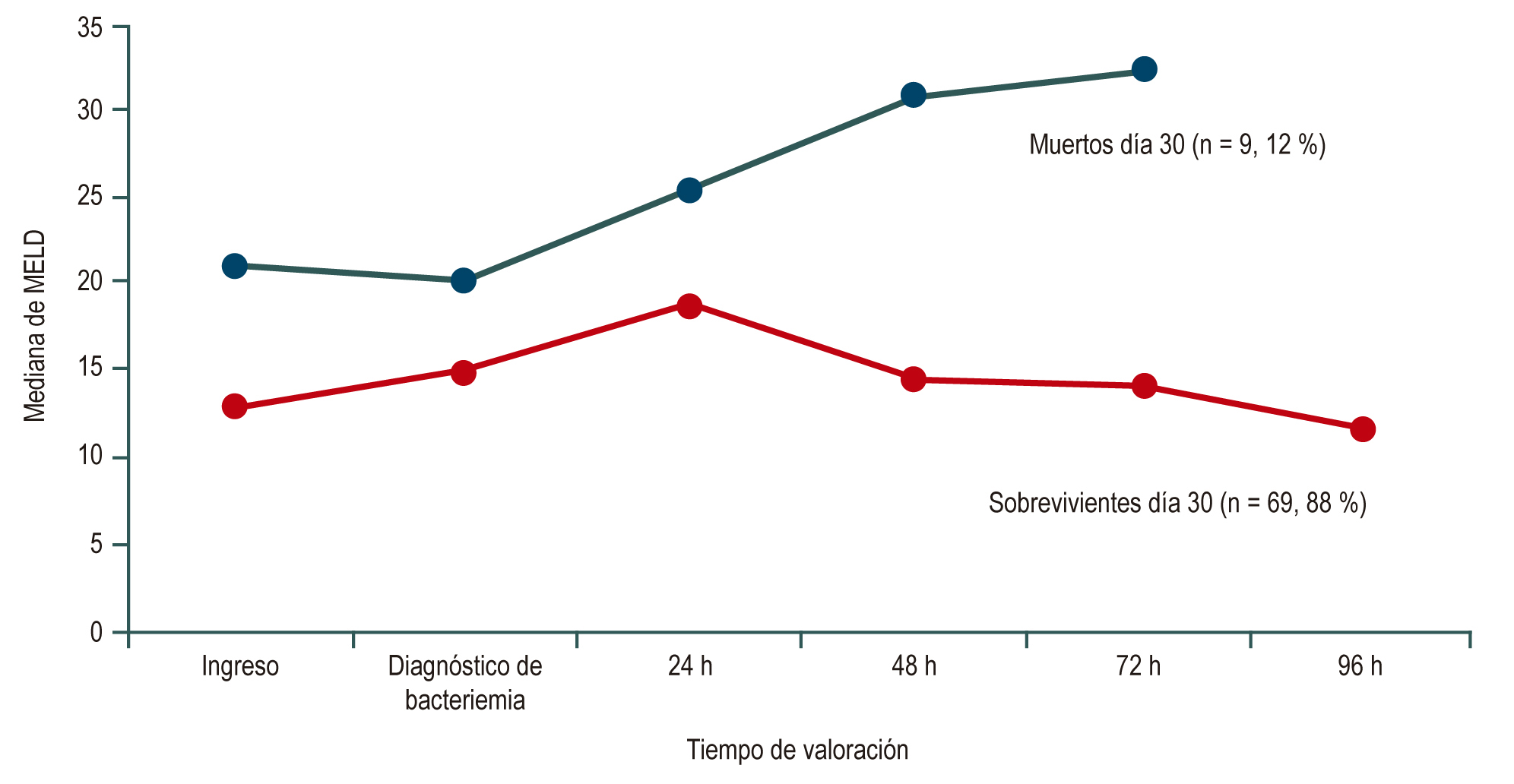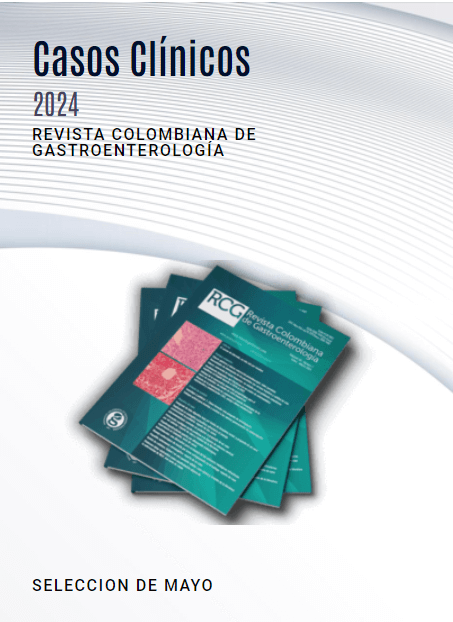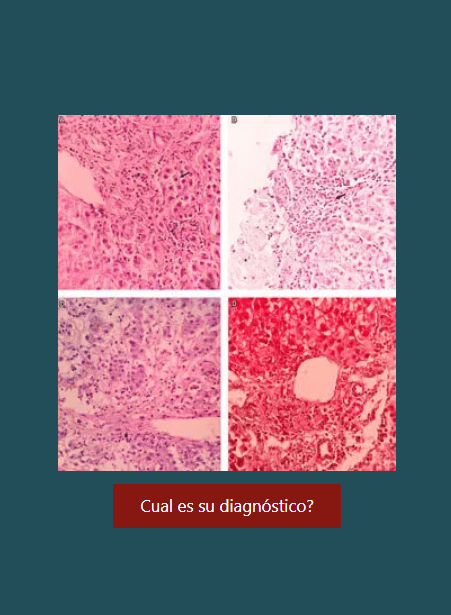Caracterización de pacientes con cirrosis hepática y bacteriemia de un hospital universitario en Medellín, Colombia
DOI:
https://doi.org/10.22516/25007440.557Palabras clave:
Cirrosis hepática, bacteriemia, ColombiaResumen
Introducción: la bacteriemia en pacientes cirróticos es frecuente y se asocia con una alta mortalidad y hospitalización prolongada. Este estudio describe las características demográficas, clínicas y de laboratorio en pacientes con cirrosis hepática y bacteriemia en un hospital de cuarto nivel.
Métodos: estudio observacional de cohorte retrospectiva. Incluyó pacientes con cirrosis hepática y bacteriemia entre el 1 de enero de 2010 y el 31 de diciembre de 2017 en el Hospital Pablo Tobón Uribe de Medellín, Colombia. Se recogieron variables demográficas, clínicas y de laboratorio. Se estimó la supervivencia durante el tiempo de hospitalización y hasta 30 días desde el diagnóstico de bacteriemia.
Resultados: se hallaron 78 pacientes con cirrosis y bacteriemia. La media de edad fue de 65 años, 66,7 % fueron mujeres. Las principales etiologías de la cirrosis fueron: criptogénica (30,8 %) y esteatohepatitis no alcohólica (EHNA; 19,3 %). La principal fuente de infección fue la vía urinaria (24 %), seguida de colangitis (23 %) y la bacteriemia espontánea (19 %). Los bacilos gramnegativos (BGN) representaron la mayoría de los aislamientos (67,9 %). La prevalencia de multidrogorresistentes (MDR) fue de 25,6 % y el uso adecuado de antibiótico empírico fue de 80,8 %. La mortalidad a 30 días fue de 11,5 %. Como mejores predictores de mortalidad se encontraron la puntuación Child-Pugh y Model for End-stage Liver Disease (MELD) al ingreso con área bajo la curva ROC (AUROC) de 0,79 (p = 0,008) y 0.72 (p = 0,042), respectivamente. Conclusiones: los hallazgos permiten conocer las principales características de los pacientes con cirrosis que desarrollan bacteriemia en nuestro medio. Se encontró un número considerable de infecciones MDR. Los pacientes con un grado avanzado de la cirrosis son los que presentan un mayor riesgo de mortalidad.
Descargas
Referencias bibliográficas
Leon DA, McCambridge J. Liver cirrhosis mortality rates in Britain from 1950 to 2002: an analysis of routine data. Lancet. 2006;367(9504):52-6.
http://dx.doi. org/10.1016/S0140-6736(06)67924-5
Fernandez J, Gustot T. Management of bacterial infections in cirrhosis. J Hepatol. 2012;56 Suppl 1:S1-12.
http://dx.doi.org/10.1016/S0168-8278 (12)60002-6
Fernandez J, Acevedo J, Castro M, Garcia O, de Lope CR, Roca D, Pavesi M, Sola E, Moreira L, Silva A, Seva-Pereira T, Corradi F, Mensa J, Ginès P, Arroyo V. Prevalence and risk factors of infections by multiresistant bacteria in cirrhosis: a prospective study. Hepatology. 2012;55(5):1551-61. http://dx.doi.org/10.1002/hep.25532
Pant C, Olyaee M, Gilroy R, Pandya PK, Olson JC, Oropeza-Vail M, Rai T, Deshpande A. Emergency department visits related to cirrhosis: a retrospective study of the nationwide emergency department sample 2006 to 2011. Medicine (Baltimore). 2015;94(1):e308.
http://dx.doi.org/10.1097/MD.0000000000000308
Merli M, Lucidi C, Giannelli V, Giusto M, Riggio O, Falcone M, Ridola L, Attili AF, Venditti M. Cirrhotic patients are at risk for health care-associated bacterial infections. Clin Gastroenterol Hepatol. 2010;8(11):979-85. http://dx.doi.org/10.1016/j.cgh.2010.06.024
DeRosa FG, Corcione S, Filippini C, Raviolo S, Fossati L, Montrucchio C, Aldieri C, Petrolo A, Cavallo R, Di Perri G. The Effect on mortality of fluconazole or echinocandins treatment in candidemia in internal medicine wards [corrected]. PLoS One. 2015;10(5):e0125149.
http://dx.doi.org/10.1371/journal.pone.0125149
Arvaniti V, D’Amico G, Fede G, Manousou P,Tsochatzis E, Pleguezuelo M, Burroughs AK. Infections in patients with cirrhosis increase mortality fourfold and should be used in determining prognosis. Gastroenterology. 2010;139(4):1246-56, 1256.e1-5.
http://dx.doi.org/10.1053/j.gastro.2010.06.019
Leber B, Spindelboeck W, Stadlbauer V. Infectious complications of acute and chronic liver disease. Semin Respir Crit Care Med. 2012;33(1):80-95.
http://dx.doi.org/10.1055/s-0032-1301737
Thulstrup AM, Sorensen HT, Schonheyder HC, Moller JK, Tage-Jensen U. Population-based study of the risk and short-term prognosis for bacteremia in patients with liver cirrhosis. Clin Infect Dis. 2000;31(6):1357-61.
http://dx.doi.org/10.1086/317494
Aggarwal A, Ong JP, Younossi ZM, Nelson DR, Hoffman-Hogg L, Arroliga AC. Predictors of mortality and resource utilization in cirrhotic patients admitted to the medical ICU. Chest. 2001;119(5):1489-97.
http://dx.doi.org/10.1378/chest.119.5.1489
Jalan R, Fernandez J, Wiest R, Schnabl B, Moreau R, Angeli P, Stadlbauer V, Gustot T, Bernardi M, Canton R, Albillos A, Lammert F, Wilmer A, Mookerjee R, Vila J, Garcia-Martinez R, Wendon J, Such J, Cordoba J, Sanyal A, Garcia-Tsao G, Arroyo V, Burroughs A, Ginès P. Bacterial infections in cirrhosis: a position statement based on the EASL Special Conference 2013. J Hepatol. 2014;60(6):1310-24. http://dx.doi.org/10.1016/j.jhep.2014.01.024
Al-Hasan MN, Lahr BD, Eckel-Passow JE, Baddour LM. Predictive scoring model of mortality in Gram-negative bloodstream infection. Clin Microbiol Infect. 2013;19(10):948-54.
http://dx.doi.org/10.1111/14690691.12085
De Rosa FG, Corcione S, Raviolo S, Montrucchio C, Aldieri C, Pagani N, Di Perri G. Candidemia, and infections by Clostridium difficile and carbapenemase-producing Enterobacteriaceae: new enteropathogenetic opportunistic syndromes? Infez Med. 2015;23(2):105-16.
Kang CI, Song JH, Chung DR, Peck KR, Yeom JS, Ki HK, Son JS, Lee JS, Kim YS, Jung SI, Kim SW, Chang HH, Ryu SY, Kwon KT, Lee H, Jung DS, Moon C, Heo ST, Kim ES, Rhee JY; Korean Network for Study on Infectious Diseases. Liver cirrhosis as a risk factor for mortality in a national cohort of patients with bacteremia. J Infect. 2011;63(5):336-43.
http://dx.doi.org/10.1016/j.jinf.2011.07.012
Marciano S, Dirchwolf M, Bermudez CS, Sobenko N, Haddad L, Genre F, Barcán L, Smud A, Posadas-Martínez ML, Giunta D, Gadano A. Spontaneous bacteremia and spontaneous bacterial peritonitis share similar prognosis in patients with cirrhosis: a cohort study. Hepatol Int. 2018;12(2):181-190.
http://dx.doi.org/10.1007/s12072-017-9837-7
European Association for the Study of the Liver. EASL clinical practice guidelines on the management of ascites, spontaneous bacterial peritonitis, and hepatorenal syndrome in cirrhosis. J Hepatol. 2010;53(3):397-417.
http://dx.doi.org/10.1016/j.jhep.2010.05.004
Friedman ND, Kaye KS, Stout JE, McGarry SA, Trivette SL, Briggs JP, Lamm W, Clark C, MacFarquhar J, Walton AL, Reller LB, Sexton DJ. Health care--associated bloodstream infections in adults: a reason to change the accepted definition of community-acquired infections. Ann Intern Med. 2002;137(10):791-7.
http://dx.doi.org/10.7326/0003-4819-137-10-200211190-00007
Magiorakos AP, Srinivasan A, Carey RB, Carmeli Y, Falagas ME, Giske CG, Harbarth S, Hindler JF, Kahlmeter G, Olsson-Liljequist B, Paterson DL, Rice LB, Stelling J, Struelens MJ, Vatopoulos A, Weber JT, Monnet DL. Multidrug-resistant, extensively drug-resistant and pandrug-resistant bacteria: an international expert proposal for interim standard definitions for acquired resistance. Clin Microbiol Infect. 2012;18(3):268-81.
http://dx.doi.org/10.1111/j.1469-0691.2011.03570.x
von Elm E, Altman DG, Egger M, Pocock SJ, Gøtzsche PC, Vandenbroucke JP; STROBE Initiative. The Strengthening the Reporting of Observational Studies in Epidemiology (STROBE) statement: guidelines for reporting observational studies. Ann Intern Med. 2007;147(8):573-7.
http://dx.doi.org/10.7326/0003-4819-147-8-200710160-00010
Campillo B, Dupeyron C, Richardet JP. Epidemiology of hospital-acquired infections in cirrhotic patients: effect of carriage of methicillin-resistant Staphylococcus aureus and influence of previous antibiotic therapy and norfloxacin prophylaxis. Epidemiol Infect. 2001 Dec;127(3):443-50. http://dx.doi.org/10.1017/s0950268801006288
Munita JM, Araos R, Pérez J, Álvarez A, Canals M, Conteras J, Marcotti A, Thompson L, Noriega LM. Bacteriemia en daño hepático crónico. Rev. chil. infectol. 2011;28(1):35-9.
http://dx.doi.org/10.4067/S0716-10182011000100006
Albillos A, Lario M, Alvarez-Mon M. Cirrhosis-associated immune dysfunction: distinctive features and clinical relevance. J Hepatol 2014;61(6):1385-96.
http://dx.doi.org/10.1016/j.jhep.2014.08.010
Bartoletti M, Giannella M, Caraceni P, Domenicali M, Ambretti S, Tedeschi S, Verucchi G, Badia L, Lewis RE, Bernardi M, Viale P. Epidemiology and outcomes of blood- stream infection in patients with cirrhosis. J Hepatol. 2014;61(1):51-8.
http://dx.doi.org/10.1016/j.jhep.2014.03.021
Hsieh CC, Lee CC, Chan TY, Hong MY, Chi CH, Ko WC. Clinical features and impact of empirical therapy in cirrhotic adults with community-onset bacteremia. Am J Emergency Med. 2015;33(2):222-8.
http://dx.doi.org/10.1016/j.ajem.2014.11.024
Park H, Jang KJ, Jang W, Park SH, Park JY, Jeon TJ, Oh TH, Shin WC, Choi WC, Sinn DH. Appropriate empirical antibiotic use and 30-d mortality in cirrhotic patients with bacteremia. World J Gastroenterol. 2015;21(12):3587-92. http://dx.doi.org/10.3748/wjg.v21.i12.3587
Brandolini M, Corbella M, De Silvestri A, Tinelli C, Albonico G, Albertini R, Ludovisi S, Bruno R, Marone P, Minoli L, Seminari E. Epidemiological characteristics of bloodstream infections in patients with different degrees of liver disease. Infection. 2015;43(5):561-7.

Descargas
Publicado
Cómo citar
Número
Sección
Licencia
Aquellos autores/as que tengan publicaciones con esta revista, aceptan los términos siguientes:
Los autores/as ceden sus derechos de autor y garantizarán a la revista el derecho de primera publicación de su obra, el cuál estará simultáneamente sujeto a la Licencia de reconocimiento de Creative Commons que permite a terceros compartir la obra siempre que se indique su autor y su primera publicación en esta revista.
Los contenidos están protegidos bajo una licencia de Creative Commons Reconocimiento-NoComercial-SinObraDerivada 4.0 Internacional.

| Estadísticas de artículo | |
|---|---|
| Vistas de resúmenes | |
| Vistas de PDF | |
| Descargas de PDF | |
| Vistas de HTML | |
| Otras vistas | |
















